Despite a cooling market, these five cars posted big gains
Another quarter has come to pass, which means another update to the Hagerty Price Guide is here. Following a confusing start to the year that created more questions than answers, some clarity has come to the market. While indications are that the market is cooling off at the moment, it is important to remember that we’re overall still at a more active point than before the pandemic.
Positive movement for some car values reflect this situation, and the thriving sub-$50,000 market is a perfect demonstration of the slower-but-healthy collector world we’re currently inhabiting. Of our biggest movers for this most recent update, the bulk of them were solidly in this “affordable” category. That said, there has been some love spread out among six- and seven-figure cars, too. Here are five of the most significant movers from the latest Hagerty Price Guide.
2004 Volkswagen Golf R32 +46%
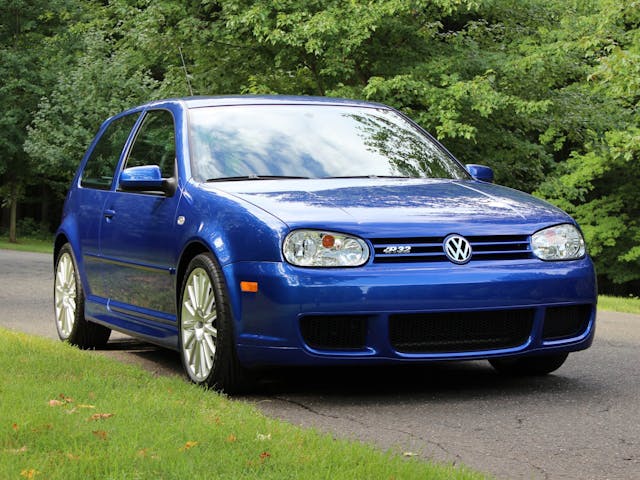
For once, when we say R32, we are not talking about Nissan GT-Rs (a shocking departure for your author), but instead the hottest of the mid-2000s hot hatches. The Mk IV Volkswagen Golf R32 is one of the newest additions to the Hagerty Price Guide and it has been doing exceptionally well in the market.
Launched in Europe in 2003, the R32 was a much meaner GTI in every way. Of course, the headlining feature was the 240-horsepower, 3.2-liter VR6 engine, but unlike the front-wheel-drive GTI, the R32 had a Haldex all-wheel-drive setup installed to better distribute the horsepower. This propelled these cars from 0-60 mph in 6.6 seconds, which was an impressive feat at the time. The R32 was such a success in Europe that VW decided to share them with the American market for 2004. It was just as popular here, quickly selling out all 5,000 units destined for the States.
These days, Mk IV Golf R32s are in demand, with clean, well-maintained cars transacting in the $30,000 range (about original MSRP), and as-new cars bringing substantially more. R32s are appreciating quickly: it wasn’t more than a year ago that an example in perfect condition could be had for that same $30,000. Meanwhile, a 97-mile example sold on Bring A Trailer in February for $109,000, including fees. Is a six-figure price tag repeatable for the R32? Well, they’re limited-production, quick, and iconic in the hot hatch world. It wasn’t long ago that the Hundred Grand Club seemed implausible for the Integra Type-R, so it’s not out of the realm of possibility for the R32. You decide.
1977 Pontiac LeMans Can Am +40%

The muscle car era may have come to an end by the early 1970s, choked to death figuratively by insurance costs and literally by smog regulations. But that didn’t mean auto manufacturers didn’t try to keep the party going. A plethora of cars with sporty graphics packages and aerodynamics kits started to hit the market shortly after, bringing us hits such as the Dodge Magnum, Chevy Laguna and the Oldsmobile Hurst/Olds. The undisputed king of 1970s sports packages, however was Pontiac. Best known for the Trans Am and its role in Smokey and the Bandit, they also brought about the sporty, mid-size Grand Am and, perhaps best of all, the limited run Can Am.
This 1977-only, LeMans-based mid-size melded together the best parts of the LeMans and Trans Am. The attractive colonnade styling was adorned with a set of Rally II or snowflake wheels, Trans Am-styled spoilers, and most importantly, a shaker hood scoop. Under the hood came two options, the venerable 400 Pontiac, or if you lived in California or high-altitude areas, a 403-cid engine sourced from Oldsmobile. The LeMans interior was reportedly upgraded with gear from the Grand Prix for a sportier look. Overall, the Can Am was a hit. Orders greatly exceeded the planned 2,500-unit production run, but a broken spoiler mould halted production at 1133.
The Can Am’s 40 percent surge puts it toward the top of cars that saw their values increase, but it isn’t an outlier in this segment, or for Pontiac. A notable uptick in activity in mid-size Pontiacs from the mid-70s means that its sister car, the Grand Prix, also experienced a bump in value to the tune of around 30 percent. Don’t worry though, these cars are still attainable, with a “good” example running around $25,000 and a show-quality car costing around $42,000. Not a bad deal when you consider how special these cars are. However, as anyone with experience with mid-’70s GM iron is well aware, the increase in interest hasn’t yet equated to restoration support, so it is still crucial to buy the best example you can find. Those in this market likely know this well, and there’s a good chance that has contributed to rising prices at the very top of this segment.
1997-2004 Lotus Esprit S4 V-8 +33%
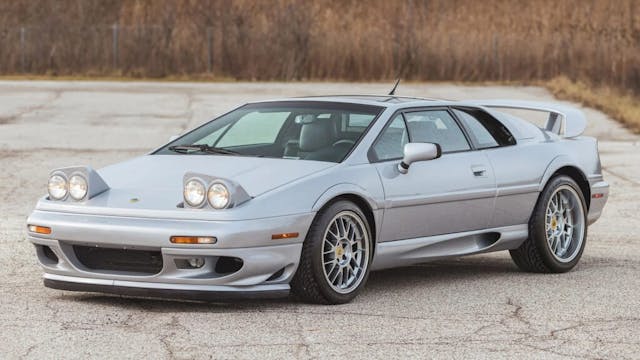
Up until recently, the S4 Lotus Esprit hadn’t garnered the same attention as its analog sports car peers. To an extent, that makes sense. By the early ’90s, the Esprit was old—the model had been around since 1976, and exotics were becoming ever more capable. To help extend its life, Lotus gave the car a substantial facelift in 1994, and a twin-turbo V-8 debuted in 1996 to help it keep pace with contemporary peers like the NSX, 911, and even various Ferraris. Despite that, it never attained the legendary status of most of those models. That lack of interest in the collector market appears to have turned a corner, however.
“More of them have been coming to market and at numbers too big to ignore” says senior auction editor and Lotus guru Andrew Newton. “I think these were undervalued for a long time relative to their rarity, looks, and performance,” he adds. As values of more well-known brands have gotten out of reach, enthusiasts may be looking toward the V-8 Esprit’s similar performance on a relative budget. An excellent example can be had for just under $100,000, a fraction of its contemporary competition.
Audi Coupe GT +27%
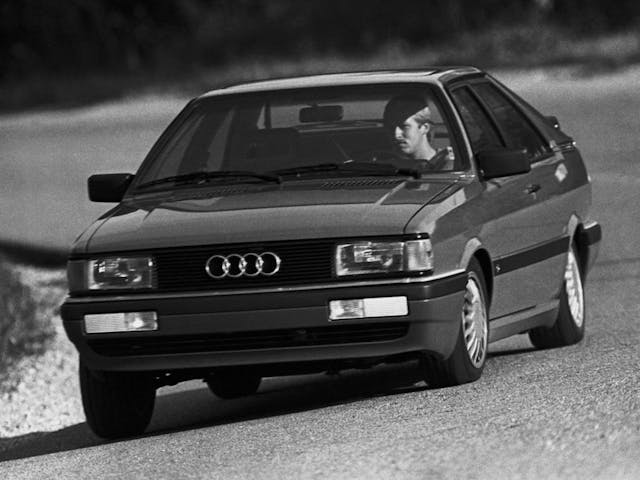
Audi’s Coupe GT doesn’t garner the attention of the sportier Quattro, but it is not the Quattro that posted big gains this quarter. Positioned as a downmarket car compared to the Quattro, the Coupe GT brings all the looks to the table without the frills. As the lack of the “Quattro” nomenclature would suggest, these were not full-time all-wheel-drive cars. The Coupe GT was available with the five-cylinder engine that Audis from this era are so well known for, but there was no fire-breathing turbo option.
While the Coupe GT is not a car often seen on the market these days, they have been commanding higher and higher prices each time they do surface. Rarity, a lower entry point than the Quattro, and general economic forces like inflation and the expanding market over the past three years are all likely contributing factors. Not to worry though, the best-in-the-world example is still a sub-$30,000 car and a nice driver is less than half that. The challenge? Finding one.
1998-1999 Mercedes-Benz CLK GTR +30%
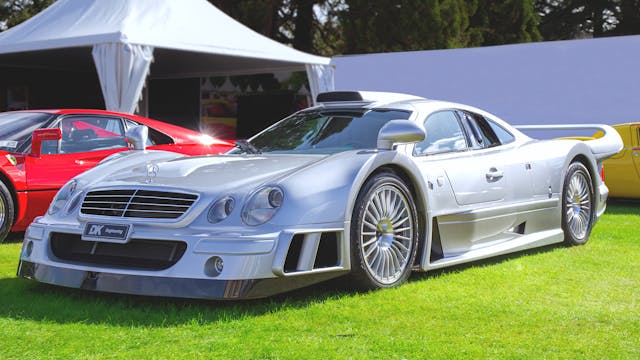
They had liftoff at Le Mans back in 1999, and now Mercedes-Benz CLK GTRs are soaring in value. Essentially a street legal version of a Le Mans prototype, it should come as no surprise that the CLK GTR’s values are tracking alongside the broader rise of supercars from this era, and now touch $10 million for examples in top condition. The closest comparisons for the insanity and exclusivity of the Merc are the McLaren F1 and Porsche 911 GT1, and the McLaren is a $20 million+ car without the Le Mans package installed from the factory. With a much more common Ferrari F50 now worth $5.65 million at the top end, the CLK GTR’s price becomes much more understandable.
***
Check out the Hagerty Media homepage so you don’t miss a single story, or better yet, bookmark it. To get our best stories delivered right to your inbox, subscribe to our newsletters.
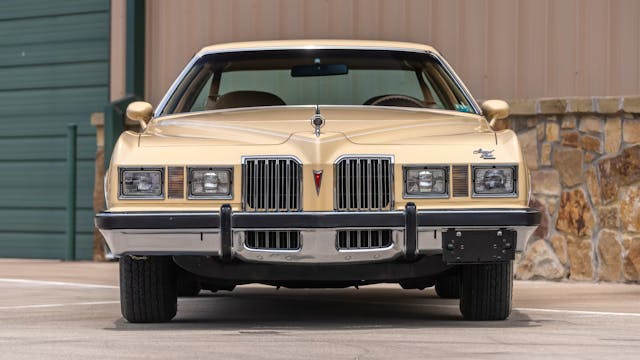
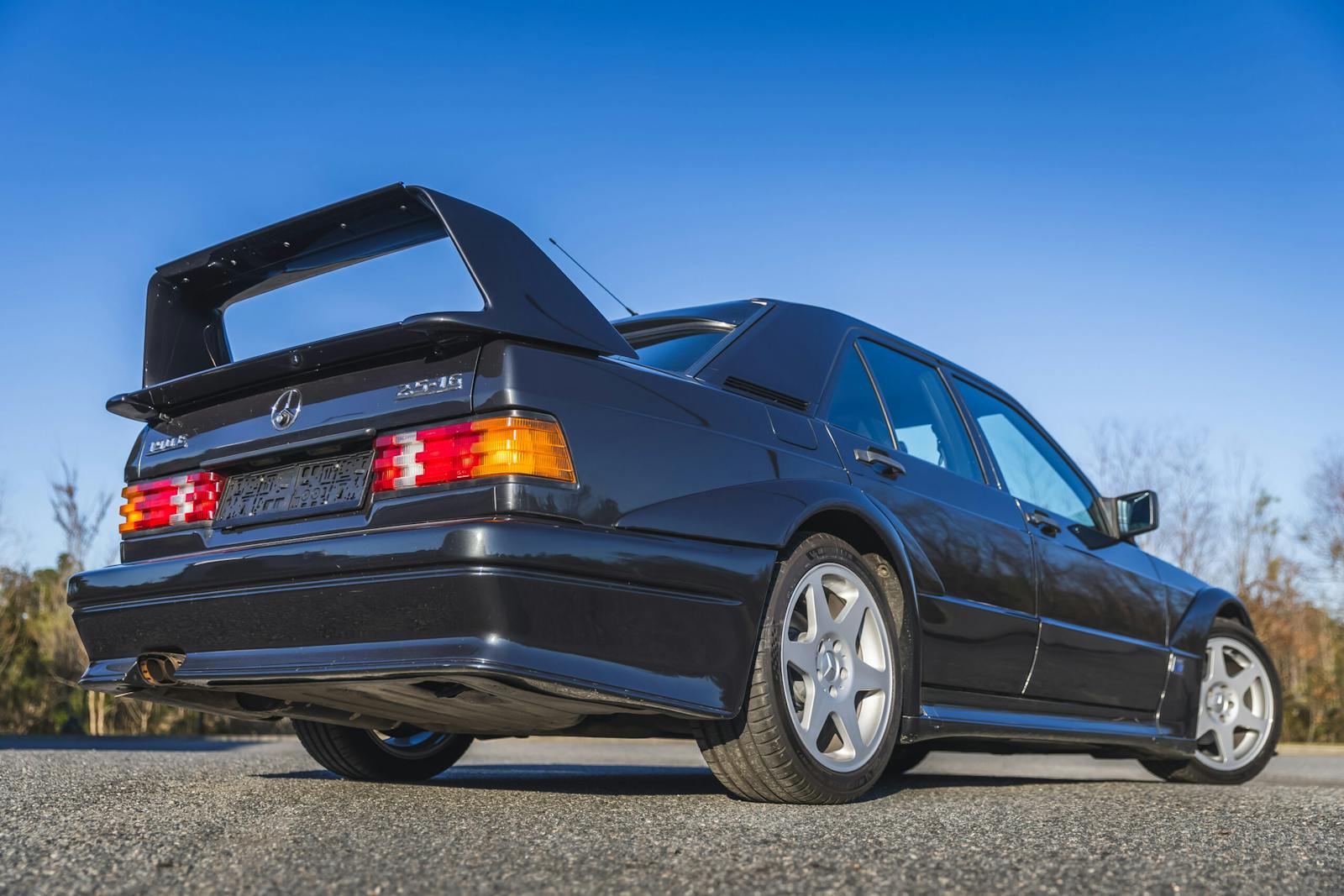
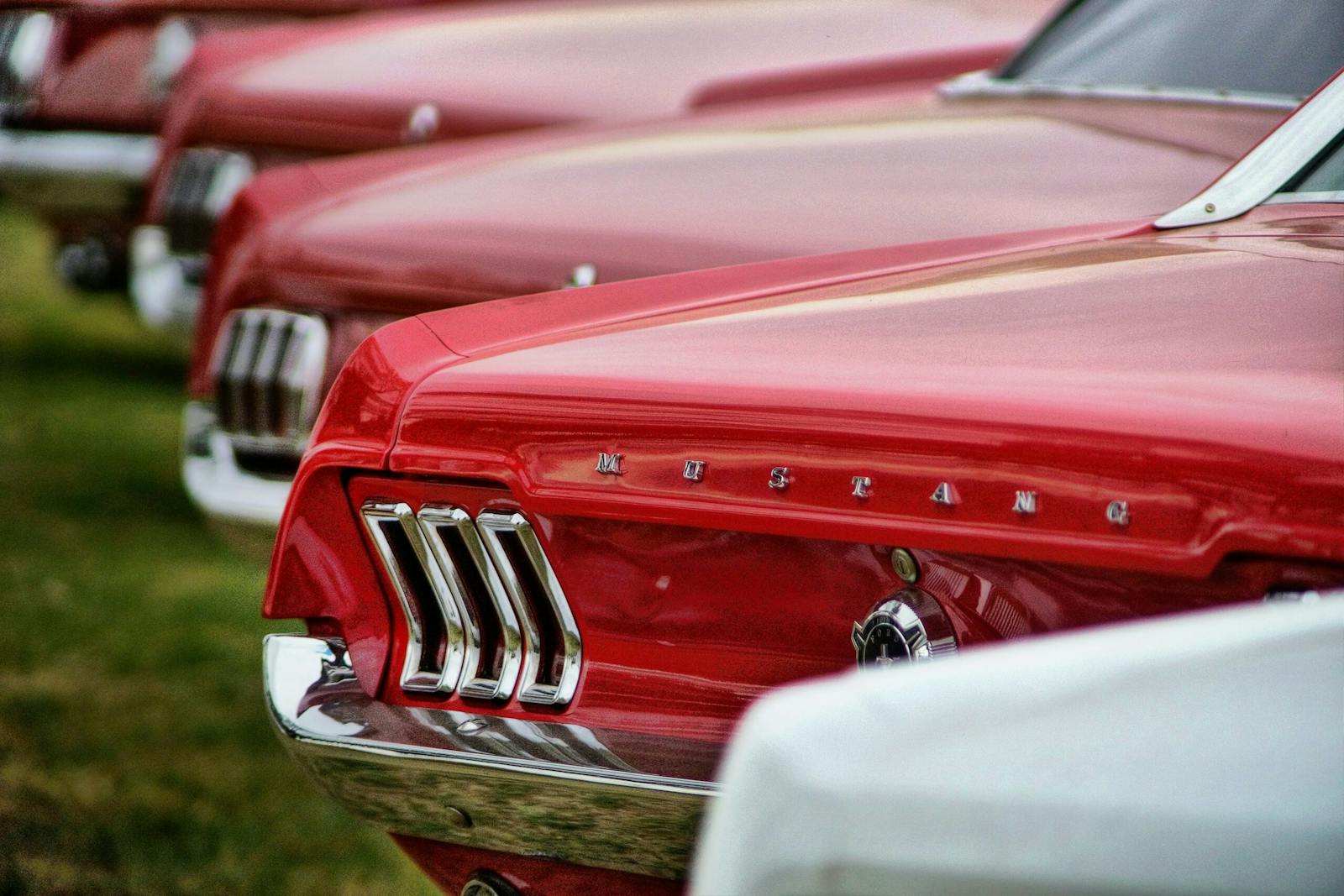
It would be helpful to know what kind of volume we’re talking about here…I can’t imagine that these price increases are based on many units? If not, are the increases really indicative of much?
By virtue of what these cars are, we’re certainly not talking the same volume we see for a Corvette or Mustang, but that doesn’t necessarily mean that there’s a lack of data. Our price guide analysts also review insurance data (quotes, endorsements, etc.) and listing data. This is far from an auction based guide, nor is it good to hyper focus on auctions since it only accounts for 10% (at best by our estimation) of collector cars that trade hands in a given year.
A good point. Welcome to the world of smoke and mirrors
Yes I think the volume would be rather low and it would be foolish to make a call on one or two sales. Grand Ams move little since there are few.
The CLK GTR did not “liftoff at LeMans.” The CLR was Mercedes’ 1999 Le Mans entry and is an entirely different car. Lazy writing by the author (no surprise since Jack Baruth seemingly disappeared).
Ed, The article said “THEY had liftoff” – I read they as Mercedes.
The article did not say IT (the CLK GTR) was a liftoff. Watch your pronouns 😉..
Lazy writing or lazy reading?
“They had liftoff”… “and now Mercedes-Benz CLK GTR’s are soaring in value”. That indicates that CLK GTR’s are the “they” in question. I’m addressing only the grammar, not the history. For Ed, the article also refers to the CLK GTR as “essentially a street legal version” of the Le Mans car, not the same car.
If we are addressing history, the CLK GTR is also not “essentially a street legal version of” a CLR. The former was a production car that raced in GT1, the latter a bespoke prototype.
This site used to have high editorial standards. Now, it has the same sloppy journalism as every other automotive blog. I’ve let my HDC membership lapse for this exact reason.
You nailed it Ed. When Hagerty started taking over events like The Amelia, Greenwich, and The Mille, I saw the writing on the wall. They are now essentially just another commercial automotive “everything shop”. Growth has it’s penalties. Fortunately you and I don’t have to participate.
The transition from good insurance company to subpar lifestyle brand happened so quickly that most didn’t even notice.
I’ve never seen an Oldsmobile shown. Why?
Darn right. Obviously, it’s because Men with Oldsmobiles *keep* their Oldsmobiles!
Yup
I agree. I am the original owner of my 1963 Oldsmobile Cutlass F- 85 Convertible purchased
On July 3, 1963. I never plan to sell the car.
I started out as an Oldsmobile enthusiast, so I do appreciate the brand very much. In a data driven article, they just didn’t see the changes that others did. But that doesn’t mean we can’t talk about them more in general. Thanks for the suggestion!
During the 1970s, I found a 50th Anniversary (1903-1953) Oldsmobile key fob. I felt it would be “gold” at the 100th Anniversary. I lost track of it. Last year I found it in a box of campaign buttons, pens, refrigerator magnets, and key fobs my mother was giving away.
By the way, is anyone interested in a LBJ campaign button? 😛
Hurst Olds, 442, Cutluss Supreme (Colonnades) with T-Tops…
All the other guys buy/sell cars to try and find the best one.
Us Oldsmobile men already have them, just ask Ralphy’s dad!
Not as many 442’s so therefore not as many sales 🙂 GM’s big seller during that period was the GTO and you really don’t see a lot of those for sale. Low cost Chevelle’s and Camaros were the big sellers at GM/Chevrolet.
Hello Jim: Oldsmobiles you say!! I own a 1970, W30, 4 SPEED CAR, in my garage next to my Hagerty Insured, 65 – 442 convertible. A 928 Porsch sits close by. Pictures available upon request..I’ve owned my 65, since I bought in 1970….The 70 I bought in 76, during the Gas Crisis…As Stude Norton says below (vvv…: Men with Oldsmobile’s “Keep their Oldsmobile’s. “)
The Stevens Esprits are fun and interesting cars. To my mind the late 4 cyl cars (SE S4 and S4s) are the ones to own. They have the improved interior, the performance of the V8 and are more reliable.
I’ve come close to buying an Esprit several times, but never did…and probably never will at this point…a mid-80’s Esprit was the first mid-engined car I rode in as a youngster, so I have always been a fan of them.
I read a lot about LS-swaps going into everything…I can think of few better candidates than a Lotus Esprit. While not a project I’m prepared to take on (just one of many crazy thoughts bouncing around in my head) a gutted and re-built (for both performance & reliability, as well as a better interior) Lotus would be fantastic car to drive and enjoy. The transmission to use seems like the biggest question mark…the guts of a wrecked C8 corvette might be easier to work into a mid-engine set up, though moving to automatic is a big trade-off.
I think I’m gonna buy a couple of 1999 Mercedes-Benz CLK GTRs.
I’m selling 3 of my 4…..
I gave all of mine away to nieces and nephews.
B^)
I own a 2003 Esprit. Watching recent auctions has been entertaining with one example selling for around $200,000. I guess like in real estate the classic and exotic car world timing can be everything. I had a feeling a couple years ago when I bought my Esprit that it was under appreciated and would go up in value. My justification to myself during the purchase was to buy your dream car now before it becomes out of reach, it looks like that might be true now. The V8 Esprits that have a documented service history are not as bad as people make them out to be, if you can do your own work they are fairly easy to work on and find parts for. I have a more difficult time locating parts on my old Saab.
They might be beating the market but it is not because I am buying any of them.
The only one I would buy would be the Pontiac
Me too.
I had, for a brief time a top of the line ‘77 Grand Am (same color as in the pic at the beginning of the article). It had just about every option I’ve ever seen on one! It was a 65k mile original car that ran great and was smooth as silk cruising g down the road with the 8-track playing and the power moonroof open. But, the wife hated it, so I moved on. It sure would have been nice to catch the spike in value…I guess I sold it too soon!
You got rid of the wrong unit!
Me 3!
Volkswagen Golf—get real.
They are.
I was hoping to buy one, but Dieselgate happened. Then I wasn’t interested in buy a castrated one.
WTF is the connection between VW’s diesel fraud and a Golf R32? Other than they are both VW products (obviously).
Mid 70’s GM cars were still good looking. I liked the Cutlass, Grand Prix, Grand Am. Buick and Chevy were OK with the Monte Carlo being best of those two brands. Some of the best styling of the day. Not all that powerful, but with some selective shopping of the performance catalogs, they could be as good as the muscle car era (if you can get past emissions inspections in certain areas). Too bad so many were lost to stock car, enduro racing and rust. Parts are hard to come by for the bodies and interiors so you have to start with a good example. Ford and Mopar had decent examples too but theirs peaked earlier in the 70’s in my opinion.
The Can Am came out my senior year in H.S. and oh how I lusted for one. But making minimum wage, $2.10 an hour at the time, it was not to be.
Can’t remember the last time I saw one. A fellow in town had one he had bought new, along with a ‘69 Judge in his garage, but that was 30 years ago and he’s long since moved.
Minimum wage $ 2,19/hr, wow. When I was in high school, driving a 1949 Studebaker, I was working for $ .75/hr
My first car was a 35 Ford coupe. Saved my 50cents an hour working in a gas station and bought it for a $150 with no second gear. Rebuilt tranny was $35 and took 2 of us 8hrs because of a little trick we found out after. My buddy, Jack, later in life squeezed a Chevy V8 in to an Austen Healy, drove from Sacramento to Bonneville, set a record at
the time for a car driven there and back.
What are the stats based upon?
How many sales took place in North American Market?
Hi Barry, I address this somewhat in a previous reply above, especially the sales portion and it being a portion of the data pool we look at. But yes, this information is relevent to the North American market. For more specifics on what we look at, data sources, etc. you may find this overview helpful.
https://www.hagerty.com/valuation-tools/about-our-conditions
I love Hagerty, but this is the stupidest clickbait article I’ve seen yet. Extreme unicorns, pretty much 1 of 1s except for R32s. This is NOT indicative of ANY segment or sentiment, these are single data points that are basically meaningless on a graph. The “market” for everybody except the top 1% is down about 10-15% over 2022 in every auction I watch.
Hi Ed, author here. Thank you for the feedback. I should mention that the market is not determined by auctions alone. In fact, by our estimate, that is only 10% of the cars that trade hands in the market. So to make a conclusion based solely on what is happening at the auction is akin to putting on a set of blinders and saying that what is happening directly in front of you is the absolute truth. Simply not the fact.
Yes, the market is settling down. The title even says that the market is cooling… I also address it in the intro and link to other articles which give a data driven view at that, which I’m sure you saw when you fully read the article. These are just a few bright spots in the market. Next week we hilight the cars that didn’t fare so well. Few less “unicorns” in there.
Looks like I’m not the only Ed who has grown tired of Hagerty’s lazy “journalism.” Pleased to make your acquaintance.
I was a district manager during the ’70s at PMD, Los Angeles. The ’77 Can Am was a desperate attempt to build a performance product with existing parts & technology in spite of unleaded fuel & other government regulations. The car didn’t sell particularly well, even in LA, which explains why there are so few available now.
From what I read, there was a failure in the equipment that built a certain part of the Can Am (the rear spoiler?), and that ended production. In any event, the performance was not as hot as the looks would suggest (a problem with many in the 1970’s), so that would also have probably reduced sales anyway; I seem to recall about 10 seconds 0-60, from a Road Test mag back then.
One sat in the Pontiac showroom for many months, in AZ. I recall a salesman promoting the spacious interior of this “mid size”. It was actually a huge car, even then, and was an obvious parts bin “sticker special” of the time. The hood scoop was cool, and the plastic bits were creative, but the station wagon front end just ruined any sport pretense. it would be fun to have one, but I would have to forget what truly terrible parts GM used in that time. All of their products were junk. (spun bearing, massive transmission failure, rear carrier failure, loose gas tank baffle, failed heater core, leaking radiator, failed fan clutch, leaking shock, battery fail, window motor…..all in 70’s GM cars under the 12k warranty!)